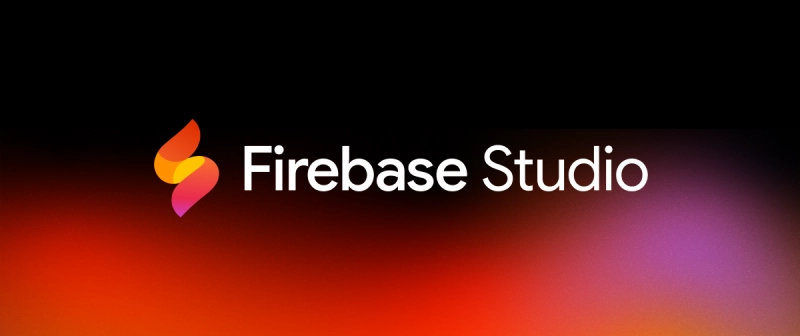Introduction
In today’s fast-paced digital world, the ability to quickly build and launch software solutions can be the difference between leading an industry or falling behind. However, traditional app development often requires deep programming knowledge, large teams, and long timelines—barriers that can exclude startups, educators, and everyday innovators. Recognizing this gap, Google introduced Firebase Studio, a no-code app builder designed to make development accessible to all.
Firebase Studio is more than a visual editor; its part of Google’s growing ecosystem aimed at simplifying and accelerating app creation. By allowing users to build full-fledged web applications without writing code, it opens the door for entrepreneurs, students, and even non-technical business teams to bring their ideas to life.
This article explores how Firebase Studio fits into Google’s broader development landscape, its standout features, and use cases across industries, and what it means for the future of app development. Whether you’re a seasoned developer looking to prototype faster or someone with no coding background, Firebase Studio might just be your gateway into the world of app creation.
A Brief History of Google’s Developer Tools
Google has long been a major player in the developer ecosystem, offering tools that cater to both web and mobile app development. It began with Google App Engine in 2008, which allowed developers to build and host applications on Google’s cloud infrastructure. This platform was foundational, providing the flexibility of custom code with the scalability of cloud computing.
In the mobile space, Google made a significant impact with Android Studio, an integrated development environment (IDE) released in 2013. Android Studio streamlined Android app development and remains the go-to tool for native mobile apps on the platform.
Recognizing the need to simplify backend infrastructure, Google launched Firebase in 2011 (acquired in 2014), which evolved into a comprehensive backend-as-a-service (BaaS) platform. Firebase provided real-time databases, authentication, analytics, and cloud functions—all managed through a unified dashboard.
Despite these advancements, non-technical users still found it challenging to build apps. This gap led to the emergence of AppSheet, a no-code platform acquired by Google in 2020, targeting enterprise users for data-driven apps.
Now, with the introduction of Firebase Studio, Google is closing the loop by offering a no-code frontend builder tightly integrated with Firebase services. It signals a shift towards a more inclusive ecosystem—empowering both developers and non-developers to bring ideas to life with fewer technical barriers.
What Is Firebase Studio?
Firebase Studio is Google’s latest step in democratizing app development. It’s a no-code platform that enables users to design, build, and deploy fully functional web applications using a visual interface, without writing a single line of code. Built on top of the powerful Firebase backend infrastructure, Firebase Studio combines ease of use with robust performance, making it a game-changer for startups, educators, enterprises, and non-developers.
At its core, Firebase Studio allows users to visually create user interfaces, link components to Firebase services like Firestore, Authentication, Cloud Functions, and Storage, and instantly deploy apps to the web. Everything from user forms and dashboards to real-time data displays can be built through a drag-and-drop builder.
Unlike traditional development environments, Firebase Studio abstracts away complex coding tasks—such as setting up databases or authentication—by providing pre-integrated modules. This lets users focus on functionality and design rather than backend configuration.
The platform is designed to support rapid prototyping, internal tools, MVPs (minimum viable products), and educational apps. While it’s not yet a full substitute for highly customized or large-scale enterprise applications, it’s an ideal starting point for projects that need to move fast and scale gradually.
With Firebase Studio, Google bridges the gap between technical power and accessibility, opening the door for more people to participate in software creation.
How Firebase Studio Fits into Google’s App Ecosystem
Firebase Studio is not just a standalone tool—it’s a carefully designed piece in the puzzle of Google’s broader app development ecosystem. By combining no-code simplicity with Firebase’s robust backend services, Firebase Studio serves as a bridge between visual app creation and enterprise-grade infrastructure.
At the center of Google’s ecosystem for app developers are tools like Firebase, Android Studio, Flutter, Google Cloud, and AppSheet. Firebase Studio complements these by filling a crucial gap: it empowers non-developers and rapid prototypers to build real apps without relying on manual code.
Firebase Studio is tightly integrated with core Firebase services like Firestore (for databases), Firebase Auth (for user authentication), and Hosting. This means that apps built in the Studio environment are not just mockups—they’re fully functional and scalable. Developers can even export and extend their apps with code later on, blending no-code creation with traditional development when needed.
In addition, Firebase Studio benefits from seamless integration with Google Cloud, allowing advanced users to tap into AI APIs, cloud storage, and serverless functions if desired. This flexibility makes it a viable option for both small teams launching MVPs and enterprises building internal tools.

Unlike AppSheet, which focuses more on spreadsheet-driven apps for business workflows, Firebase Studio is aimed at web application development with more interactive UIs. Meanwhile, it complements tools like Flutter, which remains Google’s premier toolkit for cross-platform apps that require custom design and performance.
Overall, Firebase Studio acts as a gateway tool—introducing creators to the Google developer ecosystem and enabling them to scale from idea to product within a unified and familiar environment.
Key Features That Set Firebase Studio Apart
What makes Firebase Studio stand out in the growing world of no-code and low-code platforms is its unique balance of simplicity, power, and deep integration with Google’s infrastructure. Designed for flexibility and scalability, Firebase Studio is more than just a drag-and-drop builder—it’s a gateway to production-ready app development without the traditional coding overhead.
Seamless Firebase Integration
At the heart of Firebase Studio is its native connection to Firebase services. Users can easily bind UI components to Firestore databases, handle authentication flows, and deploy apps via Firebase Hosting—all without writing code. This makes it ideal for MVPs, internal tools, and scalable products.
Visual Interface with Backend Logic
The visual editor is intuitive yet powerful. You can create forms, dashboards, and workflows visually, while configuring backend logic like triggers, conditions, and data bindings directly from the interface. This bridges the gap between design and functionality.
Instant Preview and Deployment
Firebase Studio supports live previews and one-click deployment. This rapid feedback loop is perfect for testing user experiences and pushing updates without waiting on development cycles.
Export to Code for Flexibility
One of the most developer-friendly features is the ability to export projects to code, allowing teams to scale their apps beyond the no-code boundaries as their needs grow. This future-proofs early development work.
Reusable Components and Templates
Firebase Studio offers ready-made components and templates to help users build faster. Whether you need login screens, product pages, or admin panels, you can customize and reuse them with ease.
With its combination of no-code accessibility and developer-ready scalability, Firebase Studio isn’t just another app builder—it’s a cornerstone for Google’s evolving development ecosystem.
Use Cases Across User Segments
One of the standout strengths of Firebase Studio is its adaptability. By catering to a wide range of user types—from solo entrepreneurs to educators and large enterprises—Firebase Studio is positioning itself as a truly versatile platform. Here’s how different user segments are leveraging its capabilities:
Startups and Founders
Startups often operate with limited budgets and aggressive timelines. Firebase Studio allows founders to build and launch MVPs quickly, without hiring a full-stack development team. From user registration and content feeds to feedback forms and real-time dashboards, startups can build testable products in days, not months.
Educators and Students
For educational institutions and students learning about app development, Firebase Studio offers a hands-on, accessible experience. Instructors can design coding-free assignments while students can focus on app logic and design thinking. It reduces the learning curve while still introducing critical backend concepts like databases and authentication.
Enterprise Teams and Internal Tools
Many enterprise teams need quick internal tools—like inventory trackers, reporting dashboards, or approval systems. Firebase Studio allows business analysts or operations teams to create these tools without waiting on developer queues. It also ensures data is securely handled via Firebase’s authentication and storage systems.
NGOs and Government Projects
Organizations working in humanitarian or public service often face funding and staffing limitations. Firebase Studio empowers them to build lightweight apps for community outreach, surveys, registration portals, and data collection—quickly and cost-effectively.
Designers and Creatives
For UI/UX designers and freelancers, Firebase Studio provides the ability to prototype real, interactive apps without needing coding expertise. This accelerates client presentations and allows for functional demos that closely match the final product.
In all these cases, Firebase Studio acts as a powerful equalizer—enabling more people to build functional, data-driven apps regardless of their technical background.
Challenges and Opportunities
While Firebase Studio introduces a new level of accessibility and speed to app development, it’s not without its limitations. Understanding these challenges is key to making the most of its potential.
Challenges
One of the primary limitations is customization depth. While Firebase Studio covers many use cases, users needing highly customized logic, animations, or third-party integrations may find its no-code environment somewhat restrictive. For example, incorporating complex APIs or building dynamic features beyond what’s offered in the visual editor might still require manual coding.
Additionally, scalability for complex applications is still a work in progress. Apps built entirely in Firebase Studio may eventually outgrow the platform, requiring export to code or migration to more flexible environments like Flutter or Angular.
Another concern is limited mobile-first design. As of now, Firebase Studio is best suited for web-based apps, and mobile optimization features are still developing.
Opportunities
Despite these constraints, Firebase Studio presents major opportunities. It’s ideal for rapid prototyping, internal business tools, and early-stage MVPs. Its deep integration with Firebase services means users get security, authentication, and cloud storage out of the box—without touching a single line of code.
Moreover, as Google continues enhancing its AI capabilities, the platform is poised for Gemini-powered AI assistants that could further simplify app creation, testing, and deployment. This opens the door to a future where even non-technical users can build sophisticated, intelligent apps.
In short, while Firebase Studio isn’t a silver bullet, it’s an evolving platform with significant potential for those who understand how to leverage it wisely.
The Future of Google’s No-Code Strategy
Google’s investment in no-code development reflects a broader industry trend: empowering more people to create digital solutions, regardless of their coding background. With the introduction of Firebase Studio, Google isn’t just launching another tool—it’s signaling a strategic shift towards making software development more inclusive, faster, and smarter.
As businesses increasingly demand rapid digital transformation, traditional development cycles can be too slow or expensive. No-code platforms like Firebase Studio respond to this urgency by removing technical bottlenecks. But Google’s vision extends even further. The integration of AI tools like Gemini promises to automate not just code generation, but also design suggestions, testing, debugging, and even user experience optimization.
Imagine building an app where Gemini suggests form flows, auto-generates backend connections, and flags usability issues in real time. This is where Google is heading—an ecosystem where AI and no-code work hand in hand.
Moreover, Google’s broad ecosystem provides Firebase Studio with a massive advantage. With native connections to Firebase, Google Cloud, BigQuery, AppSheet, and possibly Workspace apps like Sheets and Docs, the possibilities for integration and scalability are virtually endless.
In the future, we can expect:
- More mobile-first features for responsive app design.
- AI-driven development assistants embedded directly in the builder.
- Tighter integrations with Android and ChromeOS environments.
- Marketplace add-ons and templates for quick customization.
In short, Google’s no-code journey is just beginning. Firebase Studio isn’t the endpoint—it’s the launchpad for a future where app development becomes as easy as writing a document or designing a slide.
Conclusion
Firebase Studio marks a significant leap in Google’s mission to democratize software development. By offering a no-code solution deeply integrated with Firebase’s backend capabilities, it empowers non-developers, startups, and businesses to build functional, scalable web applications—faster and with fewer resources.
While it still has room to grow—especially in mobile responsiveness and advanced customization—it delivers on its core promise: making app development more accessible. Combined with Google’s broader ecosystem and future AI enhancements, Firebase Studio has the potential to become a foundational tool in the no-code movement.
For those seeking a balance between simplicity and power, Firebase Studio is not just a tool—it’s a doorway to innovation, inviting more voices into the world of app creation. Whether you’re prototyping an MVP or building internal tools, it offers a reliable and forward-thinking path from idea to execution.



